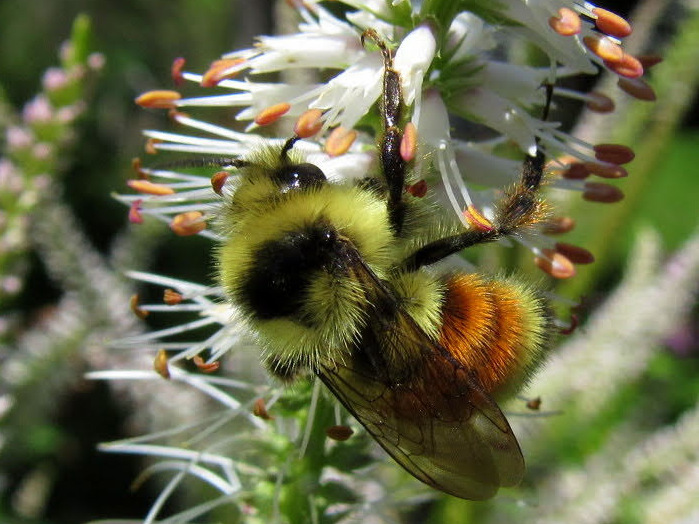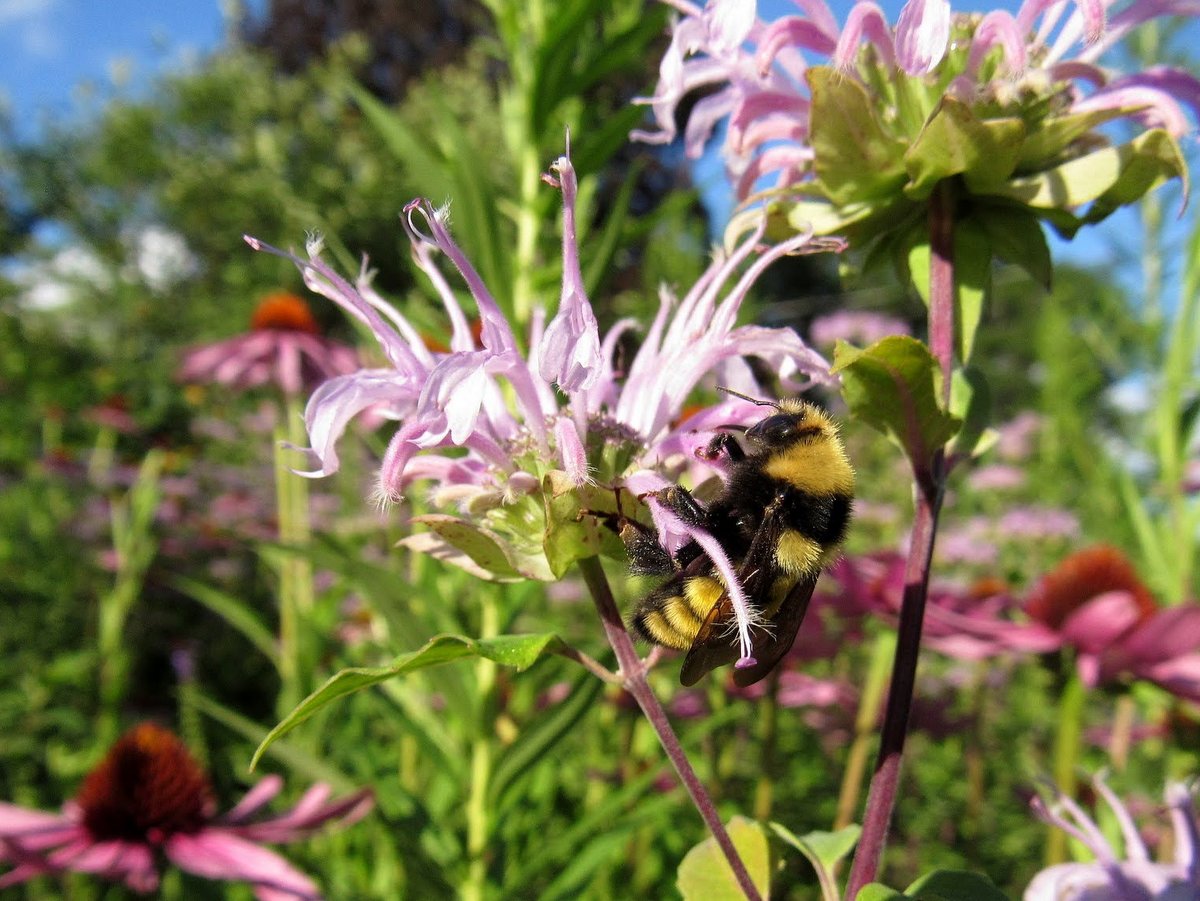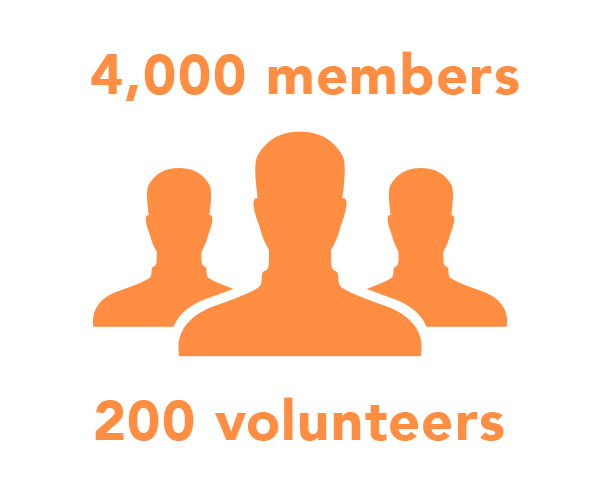Of all the insects, bees occupy a uniquely prominent place in our society and collective consciousness. Everyone knows bees. They’re visually striking, economically important, behaviorally remarkable, and to some, maybe even a bit frightening. Their iconic image is everywhere, from preschoolers’ yellow-and-black crayon drawings to stylized logos—often these days, with a message to “Bee Kind” or “Save the Bees.”
But who exactly are the bees, and what does it mean to save them?

Unequal Cellophane Bee (Colletes inaequalis)—Photo by Mark Chao
Most people envision bees as hive-dwelling, honey-making, stinging creatures with a queen at the center of a complex society. This is true only for one species—the honey bee (Apis mellifera), introduced to North America by European settlers in the 17th century, and still present in most of our settled and natural landscapes because of continued domestication.
Meanwhile, the vast majority of bees go unappreciated and often, completely unnoticed. There are more than 20,000 known species of bees. A small subset indeed does have yellow and black bands, but bees cover a much more expansive range of dazzling colors – black, white, green, blue, purple, red, orange, yellow, and tan, in all manner of sheen, shade, texture, and pattern. North America has more than 4,000 species of wild native bees—more than twice the number of bird and mammal species combined.

Tricolored Bumble Bee (Bombus terricola)—Photo by Mark Chao
More than three-quarters of bees are solitary nesters. This means that each female is both a worker and a queen, solely responsible for building her own nest, filling it with pollen provisions, and laying eggs, without any division of labor or social organization. Solitary bee behavior and life history are marvelously diverse. Most solitary bees nest in tunnels that they dig in loose soil. Many others nest in existing cavities such as hollow stems, often with protective inner structures made of leaf fragments, resin, or other material. Still, others build nests out of mud. Another 10 to 15 percent of wild bees are brood parasites, which do not build nests or collect pollen at all, but rather lay their eggs in other bees’ nests. The adult brood parasite or larva kills the host egg or larva, leaving the parasite offspring to eat and grow in its place.
We depend on honey bees for pollination, especially for certain crops such as almonds and lemons. But native bees are also vitally important pollinators of most crops, including squash, melons, tomatoes, cherries, blueberries, cranberries, soybeans, and sunflowers. In many cases, native bees pollinate more efficiently than honey bees. Perhaps most notably for our Finger Lakes region, recent research has shown that native bees pollinate apple trees as effectively as honey bees, or more so, even when the native bees are fewer in number. Over 100 species of native bees visit apple orchards in the Northeast.
Native bees are also essential for native flowering plants, and vice versa. According to the USGS Native Bee Inventory and Monitoring Lab, native bees pollinate about 80 percent of flowering plants. In many cases, plants and bees have evolved in such close, specialized mutual association that they rely directly on each other. When one declines or disappears, the other follows.

Northern Amber Bumble Bee (Bombus borealis)—Photo by Mark Chao
Over 450 species of bees have been documented in the state of New York. From 2017 through 2021, the New York Natural Heritage Program conducted the Empire State Native Pollinator Survey (ESNPS) to determine the distribution and conservation status of pollinators, including eight selected genera of bees. The survey report, released in summer 2022, concluded that out of 191 bee species in these focal genera, 46 species were at risk of extirpation. Another 20 bee species from historical records were not found in the survey nor in any other studies since 2000.
The ESNPS proposes actions to address key threats to New York’s native bees, including reducing pesticide and herbicide use, promoting plant diversity, and supporting pollinator habitats in forests, wetlands, and settled areas. The ESNPS discourages high densities of honey bee hives, citing a growing body of research showing that honey bees may outcompete native bees even outside the agricultural lands where they are intentionally introduced, and may transmit disease or parasites as well.
We need native bees and native bees need us. But truly saving the bees means more than what our first assumptions might suggest. To save the bees, we first need to appreciate their amazing diversity, their ways of life in the wild, and their value to our economy and our ecosystems. We can then piece together an understanding of their distribution and needs. With this will and knowledge, we can take action to reduce threats and sustain landscapes where our wonderful, diverse native bees can thrive.

